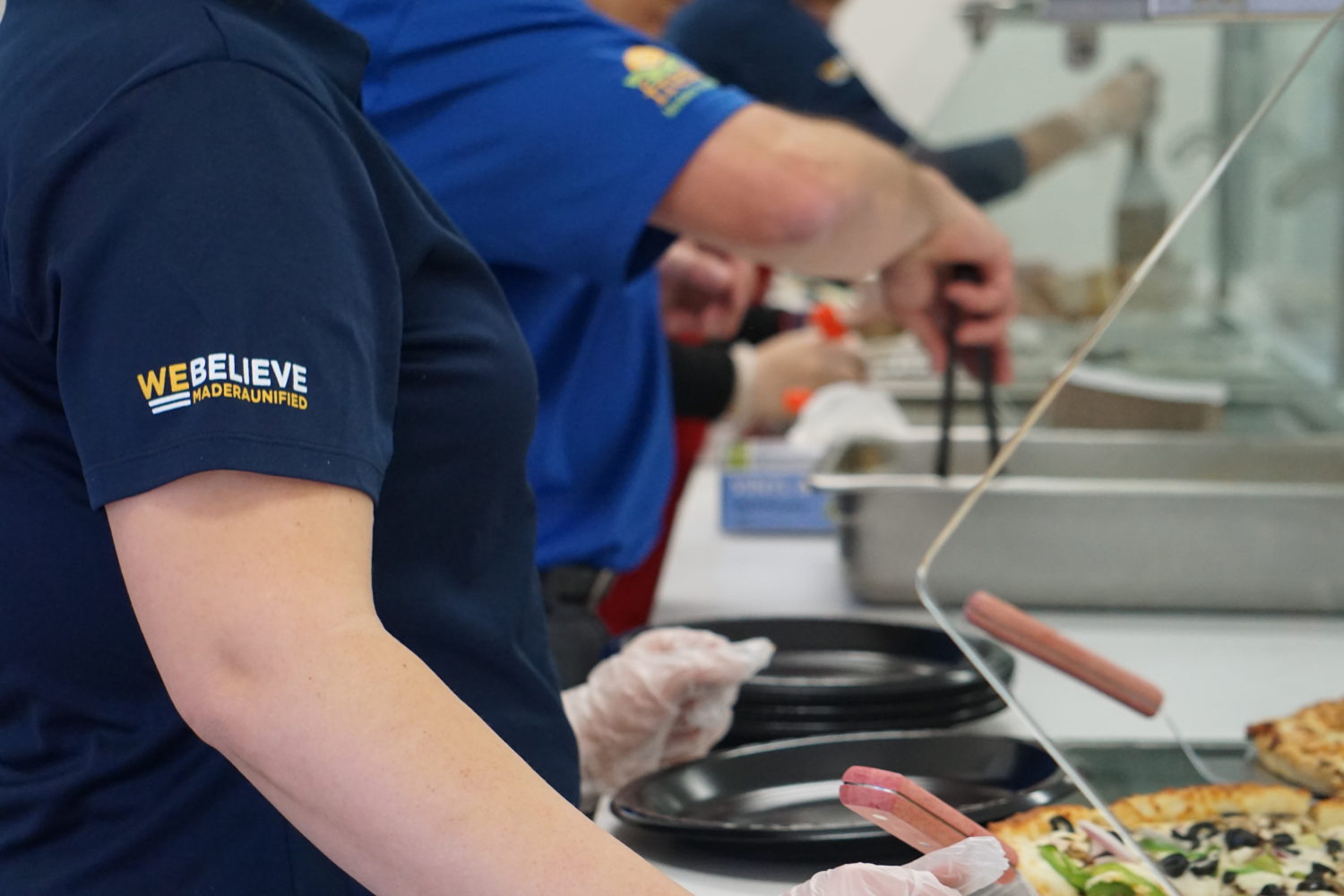By Frédéric M. Martin, Editor-in-Chief
The business of feeding students is a very busy one; constantly evolving requirements, tastes, nutrition mandates, parent and student feedback, fluctuation of local food supplies and economics, etc., all contribute to ever moving targets that end up shaping the product mix on the students’ plates. Staff gets up early every day, and food deliveries start before 6:00am with two daily batches, for breakfast and lunch. The child nutrition infrastructure is improving all the time as budgets allow MUSD to modernize and streamline storage, preparation, distribution and consumption flow. Every day, 16,000+ meals are distributed throughout the school district.
The MUSD motto is “Go Fresh!” As Brian Chiarito, Director, MUSD Child Nutrition stated: “Although we do keep and distribute frozen items, the market has been moving towards healthier foods, with less nitrates, less fillers, etc.” What do the kids see on the outside? We package the food and vegetables as one would see in retail environments, so the kids respond to the food presentation. It’s “lunch at school” rather than “school lunch”. Crowded campuses also present challenges at lunchtime: Madera South is now serving two lunches because the 3,400+ student campus can no longer all be served at once. We are serving more children now that the lines are shorter, and the service has improved. We look forward to the new high school to be constructed so we can alleviate some of the current lunch congestion. We also have sporadic challenges from various school sites as special events or un-communicated sudden schedule changes can create unexpected requirements to our district wide finely tuned daily routines. Three years ago, MUSD transitioned into a Community Eligibility Provision district, a federally reimbursement program which makes breakfast and lunch available at no charge for all the students. MUSD’s CEP program eligibility is determined every 4 years, based on the community’s low-income status.
Child nutrition services cost reduction ideas include price negotiations and benefiting from food vendors competitive market forces. MUSD also purchases local products, including fresh products directly from farmers and industrial food producers, including some delicious tamales from California companies, making sure that we strictly follow all the age-based USDA nutritional requirements. Buying directly from the manufacturer rather than a distributor bypasses availability issues and reduces costs by removing the middle man. The school district is also experimenting with breakfast in the classroom to alleviate congestion, improve school attendance, and invite morning conversations and conviviality as the day gets started. Providing breakfast also improves the students’ concentration, alertness, comprehension, memory, and learning. Kids are far more likely to eat breakfast in this setting: our data shows that we are now serving breakfast to over 80% of the kids, whereas only 27% of the children bothered to eat breakfast at the cafeteria before we switched to breakfast in the classroom.
MUSD is currently upgrading school site equipment as well as expanding its centralized storage facility. Food is prepared and cooked at a central location for all elementary schools, whereas middle and high schools have their own food processing facilities, which allows us to leverage their kitchens and only require the central MUSD food service warehouse to deliver raw materials to the school sites.
The school district will eventually have walk-in coolers at all the school sites, including upgrades to existing coolers that may no longer satisfy capacity requirements. A couple of years ago, the central location installed a new freezer, that can hold 250 pallets, which should satisfy capacity requirements for the next 20 years.




